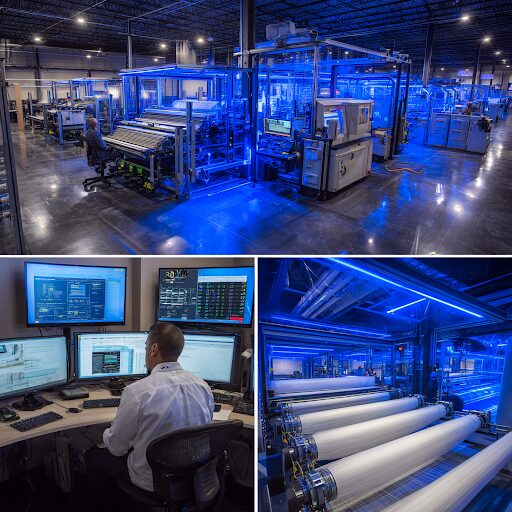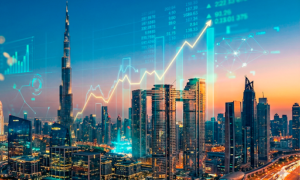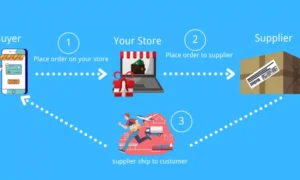In the rapidly evolving landscape of advanced materials, fiberglass manufacturing and supplies have emerged as one of the most compelling investment sectors of the decade. While traditional investors chase the latest app or cryptocurrency, savvy capital allocators are discovering that fiberglass manufacturing and supplies represent a goldmine hiding in plain sight. Like the best investment opportunities, this sector combines explosive growth potential with the fundamental shift toward digitization and sustainability that defines our current economic moment.
The numbers tell a story that would make any venture capitalist’s pulse quicken. Advanced fiberglass manufacturing innovations are revolutionizing industries from aerospace to renewable energy, driving market valuations that have experienced unprecedented growth. Consider this: the global fiberglass market, valued at $28.7 billion in 2024, is projected to reach $48.75 billion by 2032, representing a compound annual growth rate of 6.70% that consistently outperforms traditional investment benchmarks.
But here’s where it gets interesting for technology investors. This isn’t your grandfather’s manufacturing industry. Today’s fiberglass operations are becoming increasingly digitized, incorporating artificial intelligence, IoT sensors, and predictive analytics in ways that would be familiar to any Silicon Valley entrepreneur. Manufacturing technology innovations are transforming composite materials in aerospace and beyond, creating entirely new categories of high-performance applications.
The Technology Transformation That Nobody Saw Coming
Think of modern fiberglass manufacturing as the Tesla of materials science. Just as electric vehicle production revolutionized automotive manufacturing through software-driven optimization, advanced fiberglass facilities are leveraging machine learning algorithms to perfect fiber alignment, reduce waste, and achieve consistency levels that were impossible just five years ago.
The most sophisticated plants now employ digital twins, where virtual replicas of production lines allow engineers to test modifications without interrupting actual manufacturing. These systems generate terabytes of data daily, creating optimization opportunities that reduce production costs by up to 30% while improving material performance characteristics. For investors familiar with the scalability advantages of software, these digital manufacturing improvements offer similar compound benefits at industrial scale.
What makes this particularly compelling from a fintech perspective is the financing transformation occurring simultaneously. Equipment leasing for these high-tech manufacturing systems increasingly relies on usage-based financing models, similar to software-as-a-service arrangements. This shift creates opportunities for alternative lenders and fintech platforms specializing in asset-backed securities tied to production metrics rather than traditional creditworthiness assessments.
The Perfect Storm of Market Drivers
Multiple mega-trends are converging to create unprecedented demand for advanced fiberglass materials. The renewable energy sector alone represents a $117 billion opportunity, with wind turbine blade manufacturing requiring increasingly sophisticated composite materials. Each new wind farm installation creates demand for fiberglass components that must perform flawlessly for 20-25 years under extreme weather conditions.
The automotive industry’s lightweight imperative adds another layer of growth potential. With electric vehicle manufacturers obsessing over every gram of weight reduction to improve battery range, fiberglass composites offer strength-to-weight ratios that traditional materials simply cannot match. Tesla and other EV pioneers have already demonstrated how composite materials can reduce vehicle weight by 30% without compromising safety standards.
Infrastructure modernization presents perhaps the most significant opportunity. As aging concrete structures require replacement or reinforcement, fiberglass rebar and composite materials offer superior corrosion resistance and longevity. The infrastructure investment bills passed in multiple countries create a multi-decade tailwind that seems almost custom-designed for advanced materials companies.
The Supply Chain Revolution Creating New Moats
Traditional manufacturing wisdom suggested that commodity materials like fiberglass offered limited differentiation opportunities. That paradigm has been completely upended by supply chain innovations that create defensible competitive advantages. The most successful companies are developing vertically integrated operations that control everything from raw material sourcing to final product delivery.
These integrated supply chains leverage blockchain technology for traceability, ensuring that every batch of fiberglass can be tracked from sand and limestone inputs through final installation. This level of transparency commands premium pricing in aerospace and medical applications where material certification is critical. Smart contracts automatically execute payments when quality benchmarks are met, reducing working capital requirements and improving cash flow predictability.
The geopolitical dimension adds another layer of investment appeal. As companies seek to reduce dependence on volatile international supply chains, domestic fiberglass manufacturing capacity becomes increasingly valuable. Government incentives for reshoring manufacturing create additional returns for investors willing to fund these buildouts.
Digital Customer Relationships Transforming Business Models
Perhaps the most overlooked aspect of the fiberglass transformation is how manufacturers are developing direct digital relationships with end customers. Traditional distribution models that relied on multiple intermediaries are being replaced by platforms that connect manufacturers directly with contractors, architects, and engineers.
These digital platforms generate subscription-like revenue streams through design software licensing, technical support services, and predictive maintenance programs. Like the best software companies, successful fiberglass manufacturers are achieving gross margins above 70% on their service revenues while building sticky customer relationships that compound over time.
The data generated by these customer interactions creates valuable insights about application trends, performance requirements, and emerging market opportunities. This information becomes the foundation for new product development and manufacturing optimization, creating a virtuous cycle that strengthens competitive positioning.
Investment Structures That Actually Make Sense
The capital requirements for modern fiberglass manufacturing create interesting investment structuring opportunities. Unlike software companies that might scale with relatively modest capital investment, advanced manufacturing requires substantial upfront commitments for equipment and facilities. However, the asset-heavy nature of these investments provides tangible collateral that appeals to institutional investors seeking alternatives to purely financial assets.
Revenue-based financing models work particularly well in this sector because production volumes and pricing tend to be predictable over multi-year periods. Manufacturing contracts often include inflation adjustment mechanisms and volume commitments that provide downside protection while preserving upside participation. These characteristics make fiberglass investments attractive for pension funds and insurance companies seeking stable, inflation-protected returns.
Private equity firms are discovering that fiberglass manufacturers offer excellent bolt-on acquisition opportunities. The fragmented nature of the industry, combined with the capital requirements for technology upgrades, creates consolidation opportunities that generate both operational synergies and market expansion benefits.
The Sustainability Multiplier Effect
Environmental considerations have evolved from nice-to-have features to mandatory requirements across most major markets. Fiberglass materials naturally offer advantages in applications where longevity and energy efficiency matter. Building insulation made from advanced fiberglass composites can reduce energy consumption by 40% over traditional alternatives, creating quantifiable value propositions that justify premium pricing.
The circular economy trend adds another dimension of value creation. Next-generation recycling technologies allow fiberglass waste to be converted back into usable materials, creating closed-loop manufacturing systems that eliminate disposal costs while generating additional revenue streams. Companies that master these recycling processes will command valuation premiums similar to those earned by renewable energy companies.
Carbon accounting requirements increasingly favor materials with lower lifecycle emissions. Fiberglass production technologies that incorporate renewable energy sources and optimize transportation distances position manufacturers to benefit from carbon credit markets while reducing regulatory compliance costs.
The International Expansion Playbook
Global infrastructure development creates massive opportunities for companies willing to expand internationally. Emerging markets often lack domestic fiberglass manufacturing capacity, creating import substitution opportunities for companies that can establish local production facilities. These expansion projects typically receive favorable treatment from development finance institutions, providing access to below-market financing.
The regulatory complexity of international expansion actually creates competitive advantages for well-capitalized companies. Technical certifications, quality standards, and environmental compliance requirements serve as barriers to entry that protect market share once established. First-mover advantages in key geographic markets can create decades of preferential customer relationships.
Currency hedging strategies become particularly important for international fiberglass operations because raw material costs are typically denominated in different currencies than finished product sales. Sophisticated treasury management can add several percentage points to operating margins while reducing earnings volatility.
The convergence of digital manufacturing, sustainability requirements, and infrastructure investment needs has created a rare alignment of factors that favor advanced fiberglass manufacturing investments. For investors seeking exposure to real economic growth backed by tangible assets and technological innovation, this sector offers compelling risk-adjusted return potential that deserves serious consideration in any diversified portfolio.


































